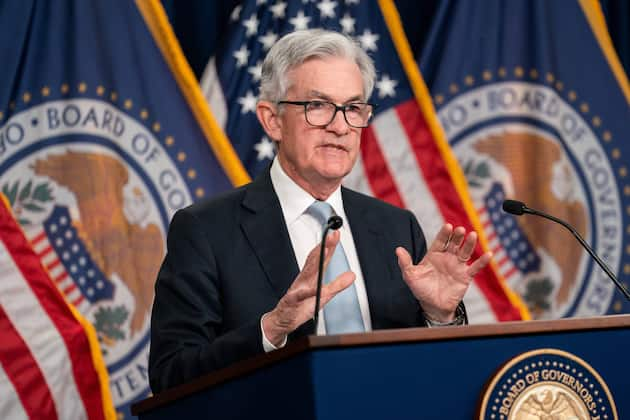According to experts, today’s interest rate decision by the Fed has already been decided. It will be exciting to see how things will continue afterwards – for both investors and savers.
The US Federal Reserve (Fed) will announce its interest rate decision today, the European Central Bank will follow on Thursday. Experts are not expecting any surprising steps, but are looking forward to future forecasts from monetary authorities.
In view of the declining inflation in the USA, the Fed is likely to slow interest rates – according to analysts this is a given. The market is broadly expecting the Fed to hike interest rates by 25 basis points to between 4.5 and 4.75 percent.
It is thus shifting down a gear after the last strong increases of 50 and 75 basis points last year. “At the same time, Fed Chair Jerome Powell will use the press conference to signal to the market that the fight against inflation is not over,” wrote Tiffany Wilding, economist at asset manager Pimco.
Since the 25 basis points are already priced into the market, no significant jumps on the stock exchanges are expected as a result of the interest rate move. More important are the statements on the future course of the US Federal Reserve. According to the CME FedWatch Tool, two-thirds of the experts expect the key interest rate to be at or below the current level of around 4.5 percent by the end of 2023.
This is also evident on Wall Street. Both the standard value index Dow Jones and the technology-heavy Nasdaq have recently increased. In addition to the expected interest rate hikes, the increase is also due to the reporting season of US companies, which has been positive to date. Another driver is the surprisingly gentle rise in wages in the USA.
The investors in the Dax, on the other hand, are more cautious. The leading German index has remained in a sideways trend for several weeks at around 15,120 points. However, the Fed’s interest rate outlook has the potential to end the sideways phase.
The European Central Bank (ECB) is likely to stick to its tight monetary policy while the Fed is again reducing its rate of interest. Having started raising interest rates later than the Fed, it is now increasingly converging on US interest rate levels.
The analysts also agree on the interest rate move by the ECB. “An increase of 50 basis points seems to be a done deal,” says Carsten Brzeski, chief economist at Dutch bank ING. The head of the central bank, Christine Lagarde, had already announced several interest rate hikes of this magnitude in December.
The reason for the increase remains persistent inflation. The European statistical office will present the inflation figures for the euro zone on Thursday morning. While the inflation rate was 9.2 percent in December 2022, it is said to have reached 9.1 percent in January.
The key interest rate determines the conditions under which commercial banks can either borrow money from the central banks or invest them as deposits. If it rises, as is currently the case after a long phase of zero interest rates, it will become more expensive for the banks to get money. As a result, loans for private and business customers of the banks are also becoming more expensive.
At the same time, the deposit interest rate, at which banks can park excess money at the central bank for a short period of time, is rising. The commercial banks can pass this increased percentage on to their private and business customers in the form of savings interest – this happened across the board in September and heralded the end of negative interest rates. This development should now continue.
However, there is one big downer. Although interest rates on savings are rising, the money continues to lose purchasing power – the inflation rate is still higher.
After the last Fed meeting in December, the stock exchanges slipped, the Dax lost around 600 points within four days. The announcement that the central banks intend to raise interest rates further in order to combat inflation scared investors. This could happen again, but many have currently hedged against falling prices.
This is shown, for example, by the Euwax sentiment of the Stuttgart Stock Exchange. The index indicates whether investors are more likely to bet on a rising or falling Dax. It is currently at its lowest level since the corona crash in 2020. The proportion of put products, which investors use to protect themselves against falling prices, is currently at its highest level in almost two years.
In other words, unlike in December, many investors have currently secured themselves. Panic selling is therefore less likely, and there would be no major reaction after the Fed meeting.















